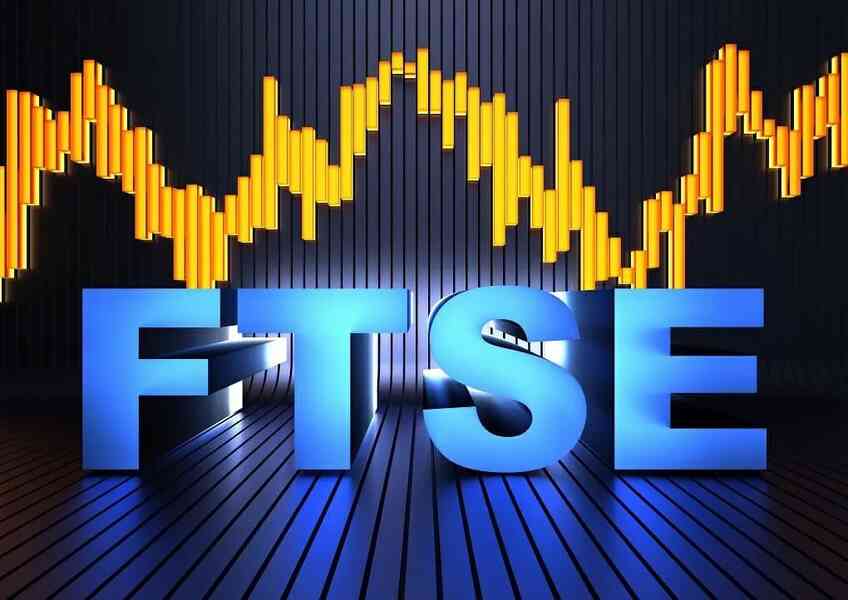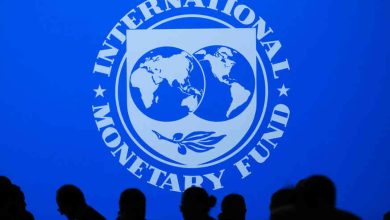Why FTSE 100 Tanks as Money Moves Unlock Risk
Global markets reel—here’s what’s driving the chaos now

FTSE 100 Plummets: The Numbers Tell the Story
Today, April 7, 2025, the FTSE 100 index nosedived, shedding over 5% in a single session to close at 7,989.23—its lowest level since February 2024. That’s a brutal £100 billion wipeout in market value, dropping the index below the £2 trillion mark for the first time in over a year, according to Bloomberg data. The UK’s benchmark wasn’t alone. Across the pond, the S&P 500 cratered 4.8% to 5,074.08, while Dow futures signaled a 1,500-point opening plunge, per CNBC’s live updates. What sparked this carnage? Donald Trump’s sweeping tariffs, announced last week, hit markets like a sledgehammer.
The FTSE 100’s slide wasn’t subtle. By 9:30 AM GMT, it had already tanked 5.3%, with heavyweights like Shell (down 6.8% to £25.12) and HSBC (off 5.2% to £6.45) dragging it lower, per London Stock Exchange figures. The FTSE 250, more tied to UK domestic firms, shed 4.4%, landing at 18,311.62. Meanwhile, S&P 500 futures pointed to a grim Wall Street open, down 4.8% pre-market, as reported by Yahoo Finance. This isn’t a blip—it’s a global shockwave.
Trump Tariffs Ignite Market Firestorm
The trigger? Trump’s “Liberation Day” tariffs, rolled out on April 2, slapped a 10% levy on most US imports, with steeper hits like 54% on China and 20% on the EU. The UK wasn’t spared, facing a 10% tariff wall. China fired back on April 4 with a 34% levy on US goods, per Reuters, escalating fears of a full-blown trade war. Markets hate uncertainty, and this is a textbook case. The FTSE 100, heavily weighted with global firms, took a direct hit as investors dumped stocks tied to trade flows.
JPMorgan analysts didn’t mince words in a client note on April 4: “These policies, if sustained, will likely push the US—and possibly the global economy—into recession by year-end.” They peg the odds at 60%, up from 40% pre-tariff. Citi’s Andrew Kaiser echoed this on CNBC, warning that a recession could slash the S&P 500 another 22.1%—a median drop seen in past downturns—dragging it below 4,800. That’s where futures were already flirting today.
Global Ripple Effects Hit Hard
The damage rippled fast. Japan’s Nikkei plunged 7.8% to a yearly low, while Hong Kong’s Hang Seng cratered 11.2%, its worst day since 2008, per Bloomberg. In Europe, Germany’s DAX fell 6.5% to 17,892.41, and France’s CAC 40 dropped 5.3% to 7,102.33, according to live data from Google Finance. Oil prices tanked too—Brent crude slid 3.4% to $72.14 a barrel, reflecting fears of slashed demand, per the International Energy Agency’s latest tick.
Back in the UK, the FTSE 100’s global exposure—81% of its firms’ revenue comes from overseas, per FTSE Russell—made it a lightning rod for trade war panic. Miners like Anglo American (down 4.2% to £22.15) and banks like Standard Chartered (off 7.5% to £6.91) bled red as Asia’s turmoil hit their bottom lines. The pound slipped 0.3% to $1.306, per XE.com, after touching a six-month high of $1.3207 last week—another sign of jittery capital flows.
Wall Street’s Worst Week Since 2020
The US didn’t escape the rout. The S&P 500’s 4.8% drop erased $2.5 trillion in value today alone, adding to a $5 trillion two-day loss reported by Reuters. The Nasdaq Composite, tech-heavy and vulnerable, sank 5.8% to 15,587.79—officially entering bear market territory, down 22% from its December peak. The Dow Jones Industrial Average shed 2,231.07 points, closing at 38,314.86, its steepest fall since June 2020, per SEC filings and NYSE data.
Big names felt the heat. Apple (AAPL) dropped 7.3% to $205.12, hit by China exposure, while chipmakers like Nvidia (NVDA) fell 7.6% to $108.43, per Nasdaq live quotes. Banks weren’t immune—Citigroup (C) plummeted 12% to $52.88, despite no direct tariff link, as recession fears gripped investors. Trump shrugged it off, telling reporters on April 6, “Sometimes you have to take medicine to fix something.” Markets clearly disagree.

Recession Odds Spike—Experts Weigh In
Analysts are sounding alarms. Goldman Sachs’ David Kostin told Bloomberg on April 6 that “significant Chinese fiscal easing” might offset some tariff pain, but he’s skeptical it’ll be enough. Schroders’ Johanna Kyrklund cut US GDP forecasts to 1% for 2025, citing Trump’s “higher-than-expected” tariffs. ING slashed its Brent crude outlook to $72 per barrel from $74, per their April 6 note, signaling weaker global growth.
Fidelity’s Jurrien Timmer, on CNBC, downplayed recession talk but flagged a bigger risk: a tech stock unwind. “The ‘Magnificent Seven’ megacaps could see a deeper rotation,” he said, noting their outsized S&P 500 weight. If they falter, the index could face more pain. Meanwhile, AJ Bell’s Russ Mould told Interactive Investor that the FTSE 100’s “global tilt makes it vulnerable, but its 4.2% dividend yield offers some cushion.” That yield, based on today’s close, is cold comfort amid the chaos.
UK Stocks: Winners and Losers
Not every FTSE 100 stock bled. JD Sports Fashion (JD.L) bucked the trend, climbing 2.1% to £1.45, buoyed by domestic focus and less trade war exposure, per LSE data. But it was the lone bright spot. Shell’s £1.71 drop slashed its market cap by £11 billion, while BP (BP.L) fell 6.5% to £4.12, dragging £6 billion off its value. The FTSE 250 saw just four gainers, with the index’s 4.4% loss reflecting broader UK gloom, per FTSE Live updates.
Across the S&P 500, defensive plays like Walmart (WMT) held up better, dipping just 1.8% to $73.45, while tech giants cratered. The VIX volatility index spiked to 28.7—its highest since August—signaling investor panic, per CBOE data. Money’s fleeing to bonds and gold, with 10-year US Treasury yields dropping 7 basis points to 3.92%, per Bloomberg.
What’s Next for Markets?
Futures paint a bleak picture. Dow futures slipped 0.1% post-close, while S&P 500 futures hovered at -0.2%, per Bloomberg’s overnight tracker. The Federal Reserve’s next moves are in focus—markets now bet on a May rate cut if recession signals grow, per CME FedWatch data. Trump’s tariffs aren’t budging, and China’s retaliation locks in trade war risks. The FTSE 100 could test 7,800 if selling persists, warns AJ Bell’s Mould, while Goldman Sachs sees it climbing to 9,100 by year-end if cooler heads prevail—a big “if.”
Oil’s slide hints at demand fears, but it’s a double-edged sword. Cheaper crude cuts costs for UK firms like Rolls-Royce (down 2.4% to £4.85), yet trade disruptions could offset gains. The S&P 500’s path hinges on tech—another 10% drop isn’t off the table if tariff fallout deepens, per Citi’s Kaiser.
Your Money Now: Actionable Steps
Here’s how to navigate this mess:
- Trim Risky Bets: Dump high-flying tech like Nvidia or FTSE miners like Anglo American. They’re tariff bait. Cash out gains—Nvidia’s still up 150% over two years despite today’s hit.
- Load Up on Defense: Walmart or Unilever (ULVR.L, flat at £43.12) offer stability. Unilever’s 4.1% yield beats the FTSE average, per LSE data.
- Watch Cash Flow: Hold 10–15% in cash or short-term bonds. Yields on 10-year gilts hit 4.05%—a safe haven if stocks tank further.
- Eye Dividends: FTSE 100’s 4.2% yield is a lifeline. Stick to payers like HSBC or BP, even if they’re bruised—they’ve got cash to weather this.
- Track Futures: S&P and Dow futures signal tomorrow’s open. A 1% pre-market drop means more pain—adjust fast.
Don’t panic-sell, but don’t sit still. Verify moves with live data from Bloomberg or Yahoo Finance—rumors kill portfolios faster than facts.
The Bottom Line
Today’s market rout isn’t a one-off. Trump’s tariffs have lit a fuse under the FTSE 100, S&P 500, and global stocks, with recession odds spiking and trade war fears locking in. The FTSE’s £100 billion loss and the S&P’s $5 trillion two-day wipeout are hard numbers—not hype. Experts see pain ahead, but opportunities lurk in defensive plays and yield. Act quick, stay data-driven, and don’t bet on hope. Stay sharp with Ongoing Now 24.





